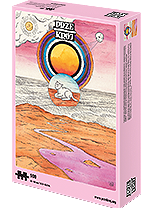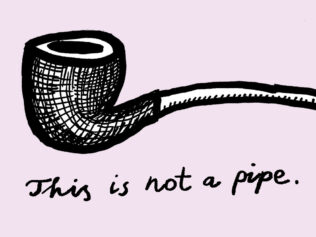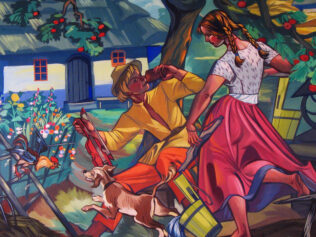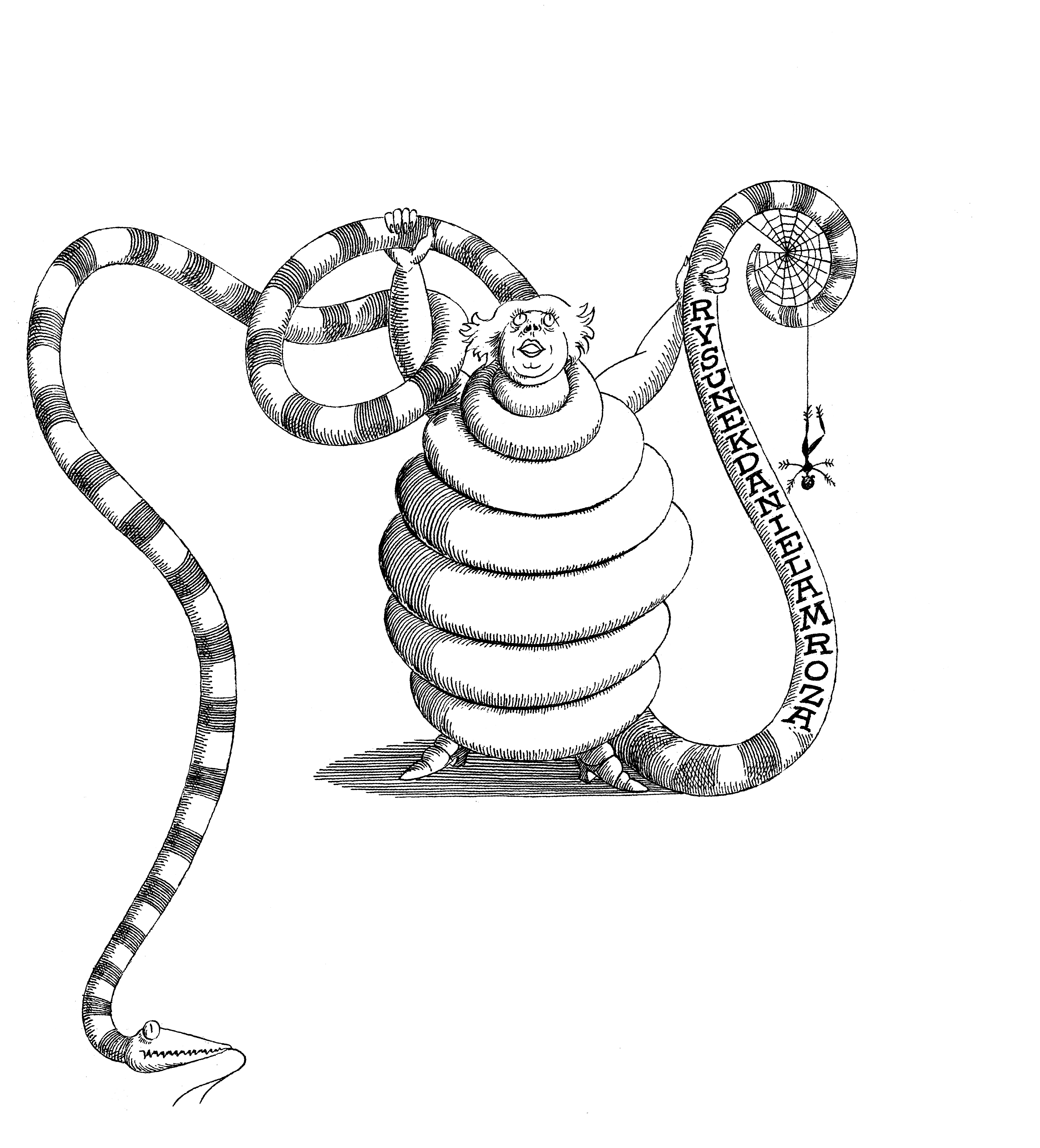
I participated in a sweatlodge purification ceremony, a ritual that, for centuries, has been an essential part of Native American culture. What is it today? A product offered by some spiritual supermarket, or perhaps a way to purification for those lost in modern reality?
“In the sweat lounge, you shall be reborn,” promised my friend, who had recently experienced his spiritual awakening. In the supermarket of religion, he grabbed whatever he fancied off the shelves: cacao ceremonies, vision-hunting expeditions, the ritual burning of the Agnihotra fires at sunrise and sunset. He ‘tried to find himself’ in Rapé ceremonies and intuitive dances. He sat in the men’s circle, and he claimed that the world “should be viewed through the lens of the heart, not the mind.” “The New Age is alive and well,” I thought mockingly, seeing the bumper crop of eclectic spiritual solutions. I tried to remain close friends with reason, but it didn’t work out this way. I wasn’t sure what was gnawing at me until I finally found the name for it: anthropo-yearning. After several drawn-out months of coronavirus-induced isolation, I longed for human contact; I needed to interact with another member of my species. In order to find them, I entered a sweat lounge. I did not care for being reborn – it sounded like some dodgy life-coach-like empty promise. All I was after was to cure my anthropo-yearning.
I also missed nature. And space. In the Bolimów Landscape Park, only 70 kilometres south-west of Warsaw, both nature and space are abundantly generous.
In the pine forest, you can encounter roe deer, hares, foxes, fallow deer, and even racoon dogs. In nearby Żyrardów, local media regularly report moose blocking the road and beavers winning another battle against human infrastructure. Bird lovers come here to hunt aural thrills, and canoeists enjoy kayaking down the river Rawka, luckily unregulated and full of delightful obstacles: fallen trees, weirs and chutes. At the edge of the Bolimów Forest lives Anna, who “hippied out” 20 years ago, as she calls it herself – she swapped the city for the countryside and gave up her flat for a new habitat. The sweat lounge ceremony will take place on the grounds of her property, far away from her neighbour’s homes, close to the meadow, forest and the humble little river Rządza.
A return to Mother Earth
There are 15 of us. We don’t know each other well, still playing the stiff and predictable small talk: “Oh, wow, your fourth time in the lodge, amazing!” “I’m from Kraków, and you? Poznań? Such a long way!” A meal and conversation in a circle will help to break the ice. Crossing the meadow to the sounds of a drumbeat will also bring us closer. We’ll have to look for hazel twigs for weaving the framework, bring in firewood, then erect a dome-like structure and cover it tightly with blankets and canvas.
Inside the hut, there is a hole for the rocks that were heated up earlier in the bonfire. It will be hot inside, between 80 and 90°C. I will lie down on the ground to soak up some of its coolness. I will want to break out of the ceremony and go outside, into the cold night. But this will come later. Now, Jan is talking. He has participated in over a hundred sweatlodge ceremonies, and once he felt confident enough, he started conducting them himself. It is better to take water inside than clothes. Let’s enter the hut naked, isn’t the ceremony symbolic of our return to Mother Earth’s womb? It doesn’t seem appropriate to embark on such a journey encased in polyester and viscose, does it? Jan makes a suggestion: there is an altar mounded in front of the hut; you can place some objects of personal importance there so that they gain power during the ceremony. I’m sceptical, but I stick my pen into the heap of dirt near the altar, just in case – who knows, maybe it’ll attract a shower of new jobs? I look at what others chose to leave there: a knife, glasses, a doll, a ring. What do they want?
It’s pitch-black inside – what a worn-out, old expression. Not that we get to use it often, with dense darkness being a rarity these days. Unless one finds herself on the edge of the Bolimów Forest. Here, we are surrounded by blackness, the only light coming from the bonfire. We stand naked around it; someone starts drumming a beat, the rest begin to dance about. Now all there is left to do is to burn some sage to symbolically cleanse ourselves off this world’s dirt, and we’re ready to enter. Off we go, into Mother Earth’s womb. I wonder how it’s going to feel.
We enter blindly, groping and crawling on all-fours, clockwise. “Everyone who is with me,” we repeat when passing the entrance. This means that we walk inside with all our relationships: with our families, friends and nature. Perhaps hot vapours will help us improve each of them?
The ceremony consists of four rounds, or doorways – each symbolizes one element. The earth round comes first. After a short welcoming speech, Jan pours water onto the heated stones. The air in the hut immediately becomes hot. So hot that it’s hard to focus on the intentions we brought here. We invite our loved ones to join us in spirit: our husbands and wives, our partners, children, friends and spiritual guides. “We won’t make it without you, come to us!” We sit in the quiet darkness. Suddenly, someone lifts the flap of the tent, letting in a waft of fresh air. But the relief doesn’t last for long. Those who are tending to the fire bring more heated stones inside.
And fire is what this next round represents. The flames devour everything old, worn-out and wrong. “They bring the object to an amorphous state that is necessary to allow rebirth in a new form,” is how anthropologists would describe it. But it isn’t easy to think about the “transformative powers of fire” when hot steam billows in your face, and the smell of sage and birch makes your head swim. Jan’s advice comes back to me: “If you’re too hot, just lie down.” I curl up on the ground, embryo-like, and stay there, motionless. It’s not helping. Using my pinky finger, I dig a tiny hole under the hut’s wall and stick my finger in it to feel the cool air outside. It’s still hot, boiling. With my leg, I touch the human next to me. I can sense how tired they are, I feel their heavy breathing. Their sweat mixes with mine. Anthropo-connection is emerging. It makes it better.
Before the air round begins, we can go outside. Pour ice-cold water over our bodies. Lie down and look into the sky. The earth is oily, good, cool. It starts to drizzle; misty drops wash the salt off our bodies. Somewhere in the woods, an owl is hooting.
We go back inside. The third round is when the silence ends. We reach for our voices – not those cultured, clipped noises we are required to use in our daily lives. Here, the voice is savage, rough, shapeless. Murmurs, squeaks, calls, moans, sighs, yawns, coughs, rumbles. To expose one’s voice requires courage. All I can do is purr like an elderly cat.
The round of water. We address our intentions. One person wants to let go of their past, another is asking for their child’s health, someone else is hoping for a new relationship. All there is left to do is the closing speech and fire offerings. It’s time to go outside. Except now, I don’t want to go. It’s so safe here, inside the earth, surrounded by people. For three hours, we were a community connected by sweat, elements and our weaknesses.
What happened here, on the edge of the Bolimów Forest?
The road to purification
Let’s begin by saying what the sweatlodge ceremony is not. It is not a Finnish sauna, Russian banya, Turkish Hammam, Roman bath, nor Japanese sentō. It is not practised for hygiene or wellness. At its source – among many (though not all) Indigenous peoples across both North and South America – sweatlodge is a religious ceremony, an important part of culture and identity practised for thousands of years. The Lakota people call it inipi, meaning ‘to live again’. Indigenous Mexicans practice the temazcal ceremony that was already known to the pre-Columbian civilizations. Sometimes, ‘the sweats’ are part of another, more complex ritual such as a sundance. Regardless of the local differences, the essential purpose of this ceremony remains unchanged: to purify the soul and body. It was not always legal; for example, in the US and Mexico, colonial governments forbade sweatlodge ceremonies for decades.
The ban also applied in Canada. In 1876, the so-called Indian Act was introduced. Its official purpose was to facilitate the assimilation of the Indigenous peoples, while it was really a tool of exercising absolute control over their lives and property. In 1885, the legislation was amended to ban the Indigenous peoples from performing their traditional ceremonies and dances. The pipe ceremony, potlatch, the sundance, vision quest and sweatlodge were forbidden up until 1951 – which is not to say nobody practised them. The rituals were performed far away from prying eyes, under cover of darkness, only for the ring of initiates. The sweatlodge ceremony became a symbol of resistance against the colonial powers.
In the United States, Indigenous peoples returned to conducting sweatlodge ceremonies in the 1970s, prompted by the waves of cultural rebirth that began to take place thanks to such organizations as the American Indian Movement (AIM), which is marginally present today, but was very active 50 years ago. When touring around the country, AIM members popularized these partially-forgotten native ceremonies. Among those attending their meetings were not only Native Americans but also some white people looking for outlets of New Age spirituality. That’s when the sweatlodge ceremony left the confines of its original context.
How should the proper ceremony look? It should be conducted by someone with years of practice under their belt, chosen by the elders. It could be the locals’ protector, healer or their spiritual leader. Someone respected for their wisdom and experience, a member of the local community who knows its language and culture well. It’s important; inside the hut, people pray and sing. Everyone should understand them and know what kind of world they are bringing to existence with their words. The ceremony leader is also tasked with keeping the ritual safe for everyone. They should know that not all kinds of stones can be used in the ceremony. Some rocks crack when heated, and flying shards could hurt the participants. As a rule, the leader does not accept money; in some cases, they can receive gifts, such as clothes or tobacco. The sweatlodge ceremony is meant to heal and purify, not to generate profit as a business venture.
Appropriated tradition
And how does it really work nowadays? The sweatlodge ritual has been incorporated into tourism. It is listed as part of the wellness offer in luxury resorts. It’s pretty much just a sauna, except with a hint of safe ‘exoticism’ and non-invasive ‘otherness’; a desired commodity on holidays. It is also popular among tourists with thinner wallets who are keen to experience the ‘real culture’. Backpackers, trekking along the sacred routes in their great identity-finding project – the search for the ‘self’ – are a plum morsel for spiritual tourism. And it’s not easy to resist the marketed authenticity and refuse the offer to peek behind the scenes of cultural heritage.
“We don’t want you in our sweat lounges. Enough! Give us our culture back!” Exclamations echoed from the stage at the Lakota Summit V in 1993, when 500 representatives of the Indigenous nations of Lakota, Nakota and Dakota from the US and Canada gathered to protest against cultural appropriation – that is exploiting their cultural heritage for profit, and profanation of holy ceremonies and ritual objects. Fingers were pointed at the guilty parties: self-proclaimed gurus and New Age charlatans, ‘plastic shamans’, and non-Indigenous wannabes. “Sacred traditions like our Lakota Pipe ceremony, visions quests, sweatlodge ceremonies and sundance were given to us by our Creator and have enabled Indian people to survive a 500-year holocaust […] Those sacred traditions are precious to us and we won’t allow their desecration and exploitation,” said the late Wilmer Mesteth, a spiritual leader of the Lakota nation, former instructor of Lakota Studies at the Oglala Lakota Centre in Kyle, South Dakota. The key demands formed at the Summit were then listed in a document known as the Declaration of War Against Exploiters of Lakota Spirituality that calls for uncompromising resistance against cultural appropriation using the means of demonstrations, boycotts, media publicity, direct interventions. “We assert a posture of ‘zero-tolerance’ for any ‘white man’s shaman’ who rises from within our own communities to ‘authorize’ the expropriation of our ceremonial ways by non-Indians,” wrote the authors of the declaration.
One such ‘white man’s shaman’ was James Ray, nowadays a disgraced coach who was imprisoned for negligent homicide, formerly a pet of the most popular American reality shows – Oprah Winfrey and Larry King used to love him. Ray’s coaching star faded in Sedona in 2009. The same Sedona the media call the “New Age capital of the world”. There, every other project has the word ‘mystical’ or ‘spiritual’ in its name, and every third one promises the absolute purification of body and mind, and maybe even enlightenment. “Your life will change,” promised Ray to the attendants of Spiritual Warrior, his original five-day spiritual development programme. Only $9000 a pop. Attractions included 36-hours of fasting in the desert under the blazing Arizona sun. And afterwards, a sweatlodge ceremony conducted by Ray. And for three people, life really did change dramatically: two died in the lodge due to dehydration and exhaustion; a third was taken to hospital in a coma and never woke up. 18 people were hospitalized. It could never have had a different ending. This is what happens when traditional ceremonies are conducted by people with no experience, seeking nothing but profit, commented Native Americans.
They pointed out Ray’s most fundamental mistakes. He let 60 people into the hut, although it shouldn’t have had housed more than 20. It was extremely hot inside; it even burned to breathe. The hut was covered with plastic that released dangerous toxins when heated up. Those were the technical issues. And what about the spiritual aspect of it? Ray promised the participants that the ceremony would fortify their endurance. In the hut, they were going to be reborn stronger, ready for new challenges. “If you survive this, you will survive anything.” Ray turned the ceremony into a spiritual competition, and most participants didn’t get to the finishing line. But is the sweatlodge a place for racing one another? Wasn’t it about cleansing and humility?
I keep wondering about what just happened here, at the edge of the Bolimów Forest. Did we just purchase a novelty product in the supermarket of religion, only to consume it like a tasty treat? In the hut, we sang Slavic mantras. Can we just reach for any ceremony and have it culturally modified in any way we like? Are we allowed to participate in it since it is not part of our cultural heritage? Or perhaps there is no point in dividing spiritual practice into ‘yours’ and ‘ours’? As long as the intentions are pure, and the execution sensible? The ceremony brings us closer to other people and to the Earth alike, so maybe it is worth taking part in it regardless of the cultural context? I don’t know whether there is a clear-cut answer to any of these questions.










